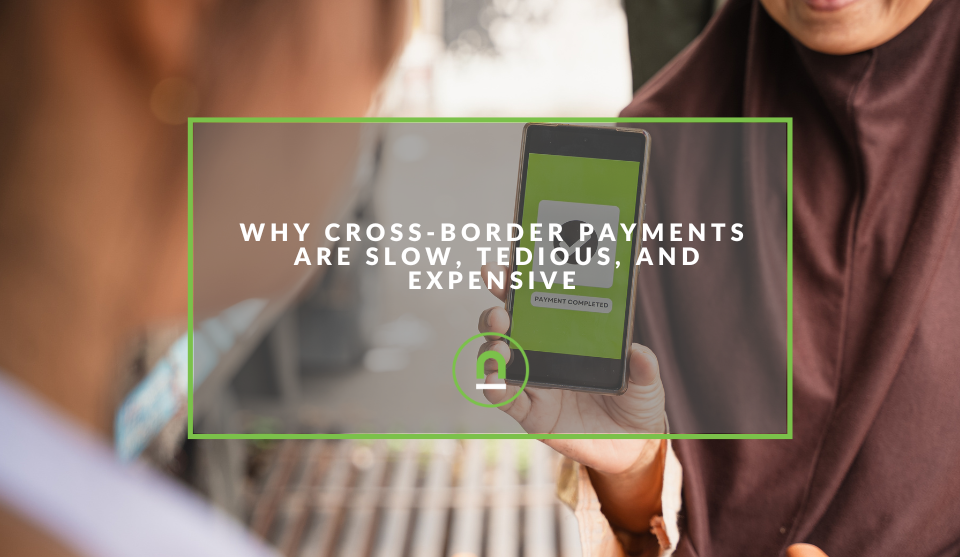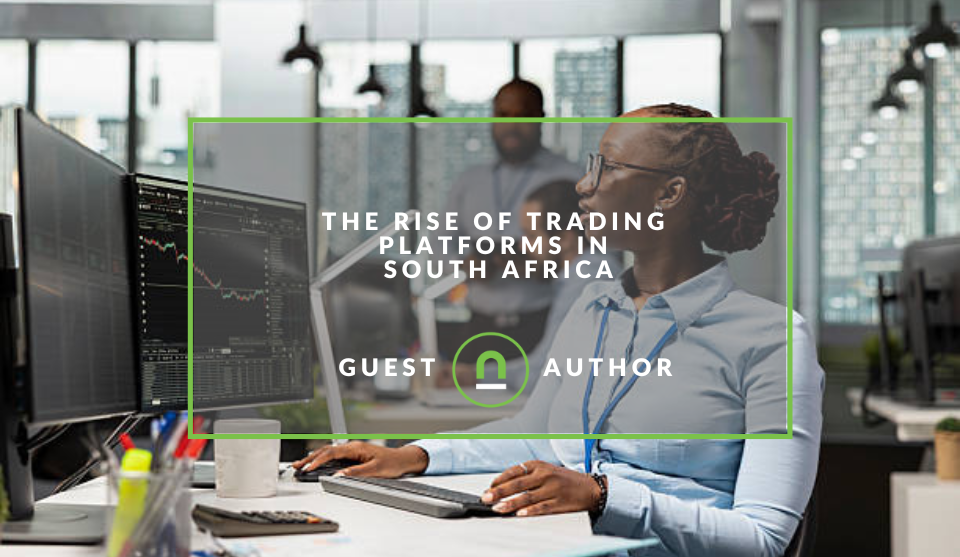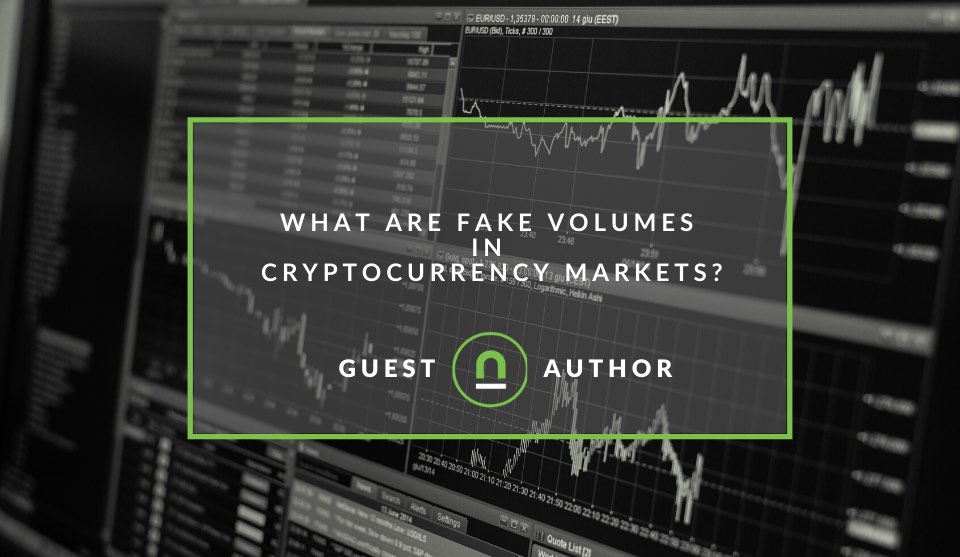Recent posts

nichemarket Advice
Why Video Production Companies Still Outshine AI
24 December 2025

Press Releases
Where You Can Find International Remote Jobs For South Africans
23 December 2025

Money Talks
Why Cross-Border Payments Are Slow, Tedious, and Expensive
17 December 2025

Money Talks
The Rise Of Trading Platforms In South Africa
16 December 2025
Popular posts
Extravaganza
Trending Music Hashtags To Get Your Posts Noticed
24 August 2018
Geek Chic
How To Fix iPhone/iPad Only Charging In Certain Positions
05 July 2020
Extravaganza
Trending Wedding Hashtags To Get Your Posts Noticed
18 September 2018
Money Talks
How To Find Coupons & Vouchers Online In South Africa
28 March 2019
What Are Fake Volumes in Cryptocurrency Markets?
25 June 2020 | 3 comments | Posted by Helvis Smoteks in Money Talks
Over the past few years, the crypto industry is evolving. Investors are becoming smarter and younger, new projects seem more promising, and exchange platforms make it easier than ever to acquire your favourite coins.
With more than 300 cryptocurrency exchanges on CoinMarketCap, it is really hard to find the platform that works best for you. All of them seem promising, but not all of them are legit.
In a report created by Bitwise just shy over two years ago, the industry came across some unfortunate, yet not unexpected, news. Most cryptocurrency exchanges are tampering their reported trading volumes.
What is trading volume?
In the context of cryptocurrency exchanges, trading volume represents the total amount (in USD) of traded funds traded in a particular day, on a particular platform. Here is an example of how this looks like:
On this list of CoinMarketCap, you can see a list of the top exchanges by reported trading volumes of the last 24-hour time-window.
Why is trading volume important to a cryptocurrency?
Cryptocurrencies need to be liquid, just like any other asset class. The higher the liquidity, the easier it is to find a person to exchange your coins with to make a trade. If a coin is worth $100, but you are unable to find someone to sell it to, then its value is practically 0.
This is one of the main reasons that many exchanges artificially inflate their volumes. Giving a false idea of huge volumes helps these platforms list more (new) coins at a premium rate.
But this is not the only reason these platforms inflate their volumes. Through this effort, data platforms like CoinMarketCap are often deceived, placing these platforms at the top of their lists when they should be listed much lower.
How did Bitwise discover trading volume manipulations?
The researchers behind Bitwises report used many different methodologies to analyse the validity of trading volumes on 81 different exchange platforms. These methods of analysis are quite complex, and not many people know how to translate the results properly.
To make things easier to understand, have a look at the following infographic. It explains the findings in an illustrated way, and further indicates which platforms are legit and safe to use:
View the full infographic here
How is trade volume manipulated?
There are several different ways that exchanges (and even large investors) can manipulate an exchange or coin’s trading volumes.
1. Wash trading
Wash trading is one of the most common methods to manipulate market volumes. Through this process, an investor simultaneously sets a buy and sell order at the same price. This results in artificially inflated volumes and misleading activity on a particular platform. In short, the investor will sell his coins to himself at a particular price (also set by himself).
2. Pump and pump schemes
These are the holy grail of cryptocurrency scams. Pump and dump schemes became very popular in 2017 when groups of investors would organise and execute massive buy and sell orders.
The groups would communicate though popular messaging platform Telegram and buy massive amounts of a particular coin, all at the same time. This resulted in a huge price increase (often more than 1000% within a few minutes).
As a result, regular investors would try to catch the wave buying at above-average market prices. As soon as the trend started to build up, the original coin “pumpers” would sell all their coins for a profit, leaving other clueless investors with worthless, overpriced coins.
3. Spoof trades
Spoof trades are also very prevalent in crypto. When “spoofing” large (groups of) investors will set a very large sell order at below average market price for a particular coin. These orders are never executed, but help to keep a coin’s price in a specific price range.
4. Bear raiding
You may be coming across this term for the first time, and that’s because more crypto investors refer to bear raiding as FUD (Fear, Uncertainty, Doubt). Essentially, this strategy entails the spreading of negative rumours surrounding a particular coin, in hopes of dropping its price. Bear raiding is done systematically by large scale investors and mainstream media.
5. Fake news
Fake news is quite similar to bear raiding, but with more ill intent. Usually, this is done by competing exchanges or coins which are looking to degrade their competitors to gain more popularity.
It is also very common for fake news to start from media outlets in hopes of more views. A good example is a turmoil between The Block and Binance in 2018 when the first falsely announced that Binance’s Chinese offices were raided by police.
Fake news can also be a catalyst for a coin’s price increase. Back in 2017, ICOs would very often announce fake partnerships or exchange listings to increase their profits during each of their sales rounds.
Overall, whether for good or bad reasons, fake news has a massive effect on exchanges’ trading volumes.
How cryptocurrencies benefit from fake trade volume
While daily trading volumes of coins are listed publicly for anyone to see, they do not affect their listing. The metric that determines a coin’s placing in the list of top coins is the size of their market cap. As such, it may be more useful to talk about how cryptocurrency exchanges benefit from this process.
Websites that show cryptocurrency trading volumes are quite popular in the industry. Only CoinMarketCap has more than 32 million visitors per month, all of which analyse different coin metrics to decide which coin to invest in for a return.
So when it is finally time to buy Bitcoin or other cryptos, investors may have a look at the list of reliable exchanges. From there, the process is quite simple.
Higher-volume platforms give the illusion of trust to new investors. These same investors will then sign up and use the platform to invest in cryptocurrencies. In time, these platforms grow in popularity and make more profit.
How to look out for signs of fake trade volume
Fake volumes may be hard to spot, especially if you are new in the space. However, one thing that is very easy to do is check for a platform’s overall popularity.
Many platforms reporting billions of dollars in trading volume per day have little to no Social Media presence. No positive reviews from reliable platforms. Not even an active customer support channel.
This is one thing that the truthful exchanges (top 10 listed in the infographic) have in common. All of them are popular brand names, with large social media presence and world-class support at any moment of the day.
While this is not the only way to prove the reliability of an exchange, it is one of the best ways to start your research.
Wrapping up
The crypto markets are still undergoing their “wild wild West” phase. Sudden changes are more than possible, whether these lead to an increase of trust or its destruction.
Overall, the reliable companies that are trying to clear up the space and increase transparency have the upper hand. And they have been doing hard work for the past three years.
It is no longer possible to host a scammy ICO or sell hope of unrealistic profits. Entrepreneurs are also much more incentivised to create projects on the blockchain than they were just a few years ago.
Only time can tell where we are headed, but we are confident that the hardest times are now behind us. Fake trading volume for coins does not determine their listing and thus does not offer a direct benefit. Please read how I funnelled down this chapter to offer some value still here.
Tell us your story
Would you like to write for nichemarket just like Helvis has? Find out how to submit a guest post, and when you're ready, you can contact us.
Contact us
If you would like to know more about digital assets or would like to market your digital asset company or how to set it up for your business, then don’t be shy we’re happy to assist. Simply contact us
Are you looking to promote your business?
South African finance business owners can create your free business listing on nichemarket. The more information you provide about your business, the easier it will be for your customers to find you online. Registering with nichemarket is easy; all you will need to do is head over to our sign up form and follow the instructions.
If you require a more detailed guide on how to create your profile or your listing, then we highly recommend you check out the following articles.
Recommended reading
If you enjoyed this post and have a little extra time to dive deeper down the rabbit hole, why not check out the following posts on cryptocurrency and blockchain.
- Why Blockchain and Cryptocurrency Is The Future Of Money
- 25 Ways To Earn Cryptocurrency
- How To Pay Tax On Cryptocurrency In South Africa
- How To Buy Bitcoin In South Africa
- Why Does Your Bitcoin Wallet Address Keep Changing?
- How To Make A Private Bitcoin Transaction
Disclaimer: This article should not be taken as, and is not intended to provide any investment advice and is for educational purposes only. As of the time posting the writers may or may not have holdings in some of the coins or tokens they cover. Please conduct your own thorough research before investing in any cryptocurrency as all investments contain risk.
You might also like
Why Cross-Border Payments Are Slow, Tedious, and Expensive
17 December 2025
Posted by Che Kohler in Money Talks
While we have modernised many industries, surprisingly, digital payments are struggling to keep up, and the old way of transferring funds online has ...
Read moreWhere You Can Find International Remote Jobs For South Africans
23 December 2025
Posted by Mia Stewart in Press Releases
Want to find international remote jobs for South Africans? Look no further, in this breakdown we look at your options so you can start applying for W...
Read more{{comment.sUserName}}
{{comment.iDayLastEdit}} day ago
{{comment.iDayLastEdit}} days ago
 {{blogcategory.sCategoryName}}
{{blogcategory.sCategoryName}}
